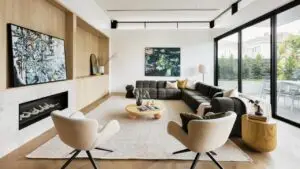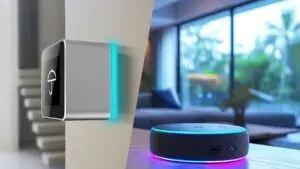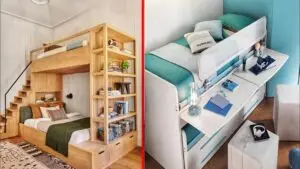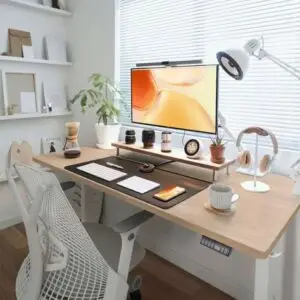Modern Living is changing the way people think, act, and live. In today’s world, modern living means balancing technology, wellness, and social connection. With digital innovation shaping every moment of our lives, people are learning new ways to stay productive and happy. The idea of modern lifestyle is not just about smart homes or gadgets. It is about creating a life where comfort, creativity, and mindfulness work together. Understanding this new lifestyle helps us stay connected yet peaceful, ambitious yet kind, and above all — truly human in a fast-moving world.
1. The Core Pillars of Modern Living
1.1 Digital Transformation in Daily Life
Technology drives every part of modern living. From morning alarms on smart speakers to managing bills through apps, digital transformation is everywhere. People depend on AI assistants, smartwatches, and automation to manage their time and work efficiently. While this brings convenience, it can also cause digital overload. Too much screen time reduces focus and social presence.
A study showed that voice assistants like Alexa and Google Home changed morning routines for millions. They help people check traffic, weather, and meetings instantly. This digital ease shows how modern technology has become part of human rhythm.
1.2 Urbanization and Space Efficiency
Urban areas are shrinking while populations rise. People now live in micro-apartments and shared co-living spaces. Urbanization has encouraged a minimalist mindset, where quality matters more than quantity. Cities like Tokyo and New York show trends of small yet well-designed homes that use every inch wisely.
The debate between minimalism and consumerism continues. Minimalism promotes freedom from clutter, while consumerism pushes constant buying. The modern balance lies in living smart, not large.
| City | Average Apartment Size | Trend |
| Tokyo | 250 sq. ft. | Micro-living with smart furniture |
| New York | 300 sq. ft. | Compact modern apartments |
| London | 350 sq. ft. | Space-saving and sustainable |
1.3 Work and Lifestyle Integration
Work-life balance is no longer the goal — work-life integration is. Remote work and freelancing have allowed people to design their days with flexibility. The digital nomad lifestyle lets individuals travel while working online. This freedom, however, brings challenges like loneliness and mental fatigue.
The “work-life blend” has replaced traditional 9-to-5 boundaries. People now manage work from cafes, homes, or co-working spaces, merging personal and professional life into one seamless flow.
2. Health and Wellness in the Modern Age
2.1 Physical Health
Fitness technology is changing how people stay active. Devices like smartwatches, AI-based fitness apps, and home gym setups track every heartbeat and calorie. These tools make exercise more personal and measurable.
Yet, sedentary lifestyles remain a serious issue. Sitting for long hours leads to weight gain, back pain, and fatigue. Simple solutions like standing desks, short walks, and stretching help fix this problem. Modern health means being aware of movement as much as diet.
2.2 Mental Well-being
The mental side of modern living is complex. Constant online presence creates stress, comparison, and burnout. Social media pressure and work notifications never stop.
That’s why people are turning toward mindfulness, therapy apps, and digital detox routines. Some companies even adopted “no-email Fridays” to give employees mental rest. Staying offline sometimes is now a modern luxury — a way to recharge the mind.
| Method | Benefit | Example |
| Meditation Apps | Reduces stress | Calm, Headspace |
| Digital Detox | Boosts focus | Weekend phone-free |
| Therapy Sessions | Improves mood | Online counseling |
3. Sustainability and Conscious Living
Modern living is also about living responsibly. People are rethinking how they consume, build, and waste. Eco-friendly homes now use solar panels, recycled materials, and smart energy systems. These designs not only save money but protect the planet.
The idea of mindful consumption is growing fast. Many now choose sustainable fashion, organic food, and reusable products. This conscious shift shows that being modern means being aware of one’s footprint.
| Habit | Impact | Modern Alternative |
| Plastic use | Pollution | Reusable materials |
| Fast fashion | Waste | Sustainable brands |
| Energy waste | High bills | Smart thermostats |
4. Social Connections and Modern Relationships
In modern living, relationships have changed. Social media connects millions yet often leaves people emotionally distant. Virtual friendships and online dating have replaced traditional ways of meeting people.
Gen Z defines connection differently. For them, texting, video calls, and online communities are genuine relationships. While some call it superficial, it also provides emotional support and inclusion across distances.
| Type | Traditional | Modern |
| Communication | Face-to-face | Text & video chats |
| Dating | In-person | Online apps |
| Friendship | Local circles | Global networks |
5. The Role of Technology in Shaping Identity
Technology now defines how people see themselves. Online personas, social profiles, and digital creativity form modern identities. Platforms like Instagram, YouTube, and TikTok let users express art, lifestyle, and ideas globally.
However, comparison culture creates pressure. Many chase validation through likes and followers. Still, digital creators are learning to balance authenticity and exposure, building self-worth beyond screens.
6. Home Design and Comfort Evolution
Homes are now intelligent and peaceful spaces. Smart homes allow people to control lights, temperature, and security from a phone. Open layouts and nature-inspired designs create comfort and focus.
The trend of biophilic design brings natural elements indoors — plants, light, and textures that boost mood and productivity. In modern architecture, beauty and function coexist for mental peace and efficiency.
7. Modern Living Challenges
Modern lifestyle is not all easy. People face digital fatigue, privacy loss, and rising living costs in urban areas. The world offers endless content but less calm. Overconsumption of news, apps, and entertainment causes mental overload.
Privacy is another concern. Smart devices collect data every day, raising safety questions. Managing this balance between freedom and technology is one of the biggest modern challenges today.
| Challenge | Effect | Possible Fix |
| Digital overload | Anxiety | Set screen limits |
| High costs | Financial stress | Minimalist living |
| Privacy loss | Data risk | Use encryption tools |
8. The Future of Modern Living
The next decade will reshape life again. AI-powered homes, smart cities, and hybrid work systems will dominate. Cars, health, and education will all run on data and personalization.
However, people must stay human amid all innovation. Simplicity and emotion must balance technology. The future of modern living lies in harmony — not in excess. Machines may think faster, but only humans can feel deeply.
Conclusion
Modern living is not about gadgets or trends — it is about balance. It means living consciously with both progress and peace. People must use technology without letting it use them. The best version of the modern lifestyle connects comfort with care and innovation with integrity. When we choose awareness over addiction, and mindfulness over speed, we redefine what it means to live modern — on our own terms.
FAQs
1. What is the main idea of modern living?
Modern living means adapting to technology, comfort, and mindful living in a fast-paced digital world.
2. How does technology affect modern living?
Technology brings ease and speed but also creates challenges like screen addiction and data privacy issues.
3. Why is sustainability important in modern living?
It helps reduce waste, protect nature, and ensure a better quality of life for future generations.
4. How do people balance work and life today?
They use flexible work models, remote jobs, and digital tools while focusing on mental wellness.
5. What will modern living look like in the future?
AI, smart homes, and eco-conscious designs will shape future lifestyles while emphasizing simplicity and balance.





